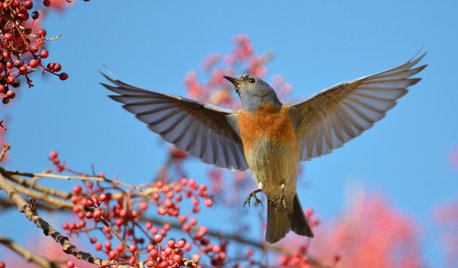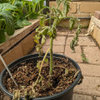Apparently squirrels do migrate - among other things.
This from the link below ...
Identification: The gray squirrel is the largest and most common of the Connecticut squirrels. The back and sides of its coat are silver-gray in color and the underparts are white. Various color phases occur in this species, including several shades of black and red. Its broad, bushy tail is about the length of its head and body combined.
Range: Gray squirrels occur from southern Quebec, New Brunswick and Ontario to Florida, west into eastern Texas, and north into southern Manitoba. They have been introduced into Washington, British Columbia, and Vancouver Island.
Reproduction: Gray squirrels mate in late winter and spring. After a 44-day gestation period, females give birth to a litter of two to seven young. They are blind and helpless at birth but are weaned and somewhat independent at eight to 10 weeks of age. The second litter is usually born in July. The nest is often in a tree cavity or constructed of leaves suspended in the treetops. These leaf nests are also used for temporary protection against inclement weather or predators.
History in Connecticut: The gray squirrel has always been numerous throughout the state inhabiting deciduous woodlands, when abundant, yet able to adapt and disperse as these woodlands were cleared for houses, agriculture, and industry.
Interesting Facts: These tree-dwelling rodents are agile climbers and jumpers. They have keen senses of sight, smell, and hearing and are alert, nervous and wary, especially on the ground. When danger is near, they quickly retreat to the safety of the trees. Gray squirrels are somewhat sociable and can tolerate other squirrels nearby.
The gray squirrel is active year-round but needs tree cavities for shelter during harsh weather. In the fall, gray squirrels gather and bury, at random, a winter food supply. This food supply is usually recovered as needed, by sniffing the ground until a buried nut is found.
In a few years, populations of gray squirrels can change dramatically. During successive years of good acorn production, squirrel populations may reach high levels. If food supplies are low the population may decrease substantially. Historically, there have been reports of extensive migrations of squirrels. An extensive migration of gray squirrels in Connecticut was reported in 1933, when 1,000 or more swam across the Connecticut River between Hartford and Essex. Although the exact cause of these migrations is unknown, most likely it was a result of a limited food supply.
Management of Problem Squirrels: Most complaints about squirrels are from homeowners with squirrels in their houses. Squirrels will readily take up residence in a building if access to sheltered areas such as eaves and attic crawl spaces is available. Gnawing, scratching, and pattering sounds, in early morning or daylight hours, usually signal their presence. Balls of torn insulation, cardboard, and dried leaves and twigs may pinpoint nests, but nests and young may be totally concealed within eaves or wall spaces. Squirrels in house eaves and attics can damage insulation and electrical wiring and should be removed.
<snip>
Live-trapping gray squirrels, using metal box traps at least two feet long is often the most effective way to remove them. Place traps, baited with apple chunks, peanut butter, or various nuts, in heavily traveled routes or on rooftops, along porch railings, or within the attic. Once trapped, squirrels should be quickly removed from cages and released.
For more information on the management of problem squirrels or for a referral to a licensed Nuisance Wildlife Control Operator, contact the Wildlife Division.
Game Status: Gray squirrels are a popularly hunted small game species in many parts of the United States. See the current Connecticut Hunting and Trapping Guide for hunting guidelines and information.
GRAY SQUIRREL Sciurus carolinensis














daninthedirt (USDA 9a, HZ9, CentTX, Sunset z30, Cfa)
zeedman Zone 5 Wisconsin
Related Discussions
squirrels this year
Q
NEW: FOTESS Swap Jan. 2018 - Splendor of the New Year
Q
New Year's Eve - January, 2018
Q
Some Blooms for 2018. Late for me this year.
Q
gumby_ctOriginal Author
daninthedirt (USDA 9a, HZ9, CentTX, Sunset z30, Cfa)
brdrl